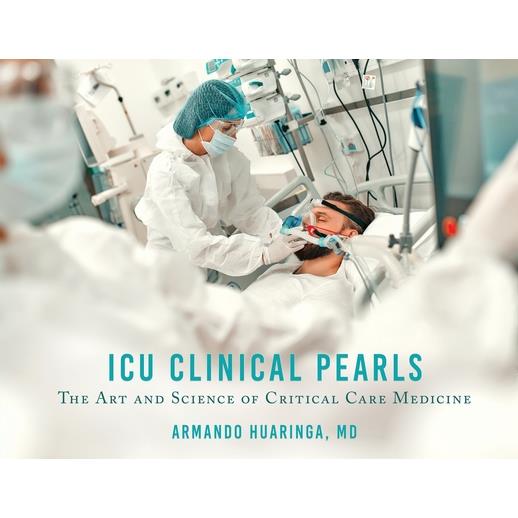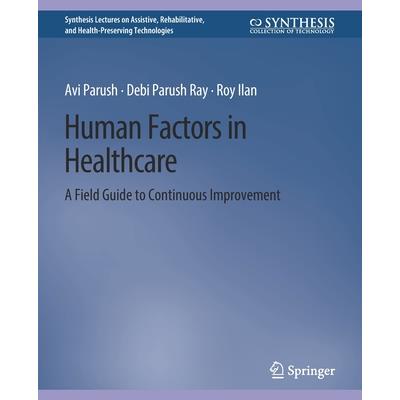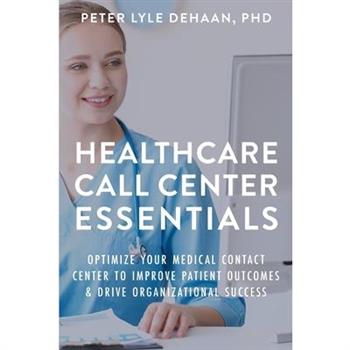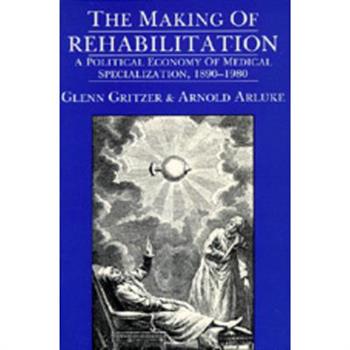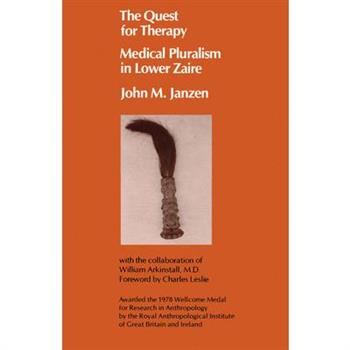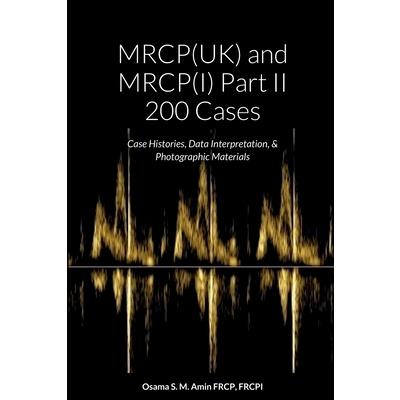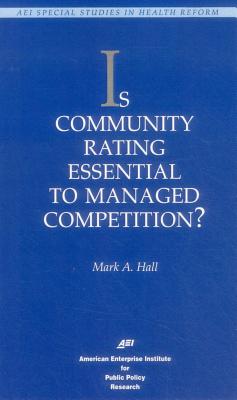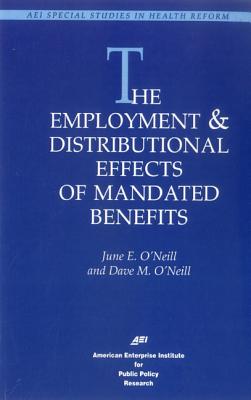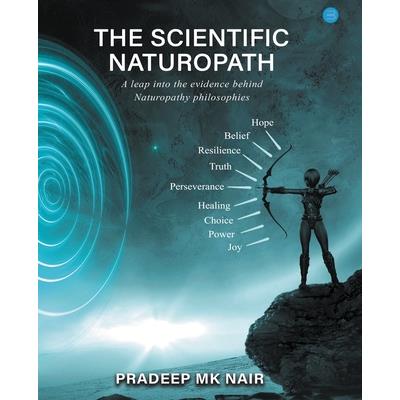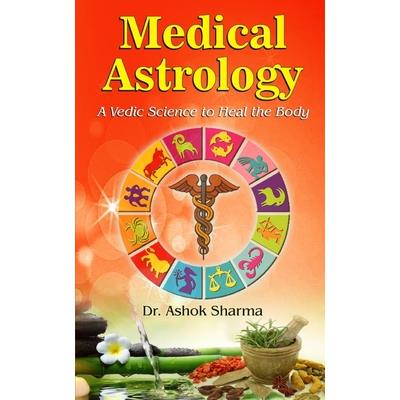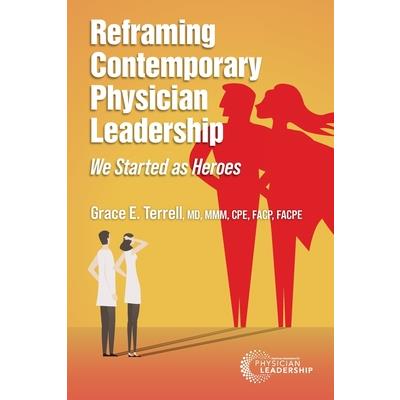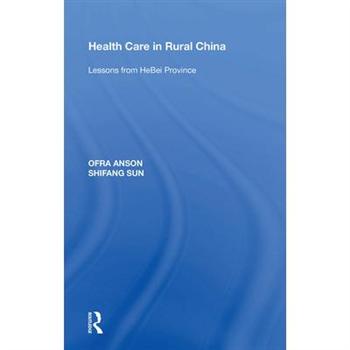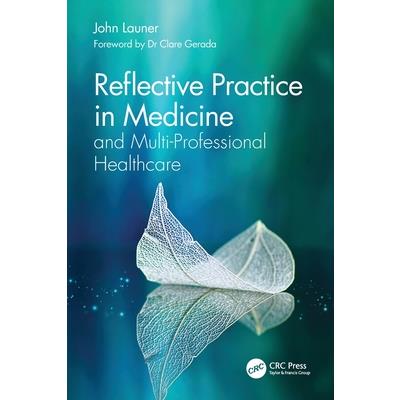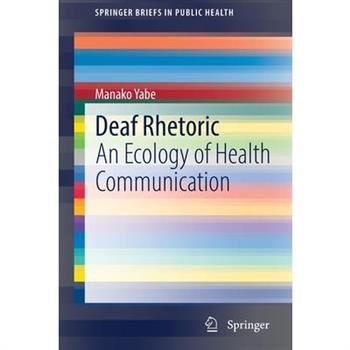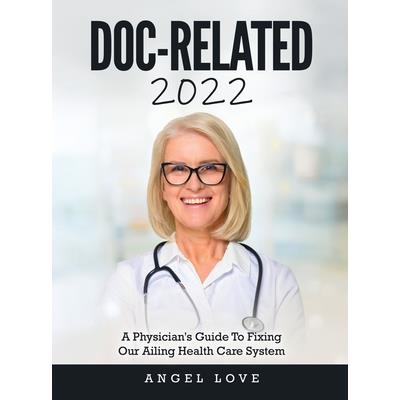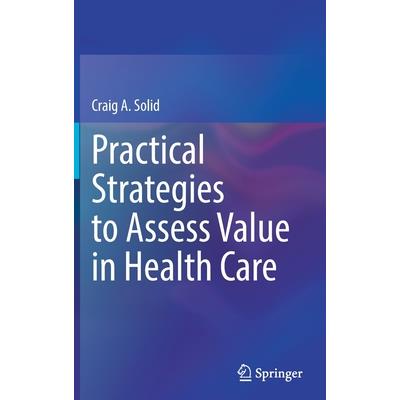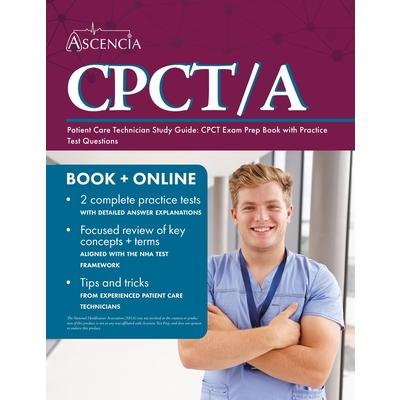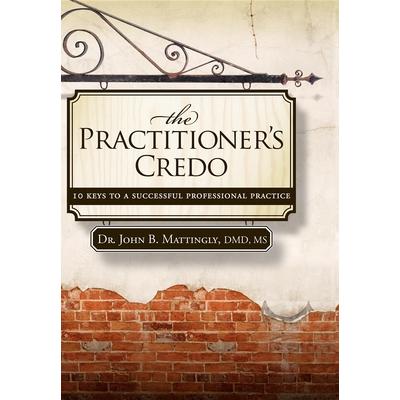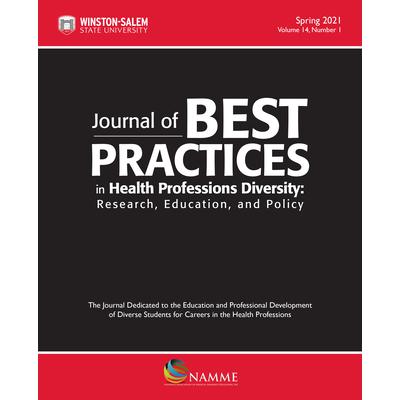Doing the Right Thing
Doing the Right Thing: 'New' Building Zimbabwe's Health SystemDeconstructing Health System Challenges, Embracing Innovation and Technology and Rebuilding the Health System.This book presents an analysis of challenges confronting Zimbabwe's health care delivery system, drawing from the World Health Organization's six building blocks framework, which consists of Leadership and Governance, Health Financing, Health Information, Medicines-Vaccines, and Technologies, Human Resources for Health, and Service Delivery. In utilizing this concept, the author considers the interconnectedness of the building blocks as a Complex Adaptive System and presents recommendations that inform policy and intervention choices and their complex transformation into health system outputs, outcomes, and impact. The theory of change presented proposes a diagonal and holistic approach to health systems strengthening, using Zimbabwe as a case study.The book will be of interest to policymakers and advisers, decision-makers, health professionals and practitioners, academics, researchers, and students studying health sciences.
ICU Clinical Pearls
ICU CLINICAL PEARLS summarizes the experience of 40 years of life in the intensive care units where the sickest patients come or are sent in the hope to return to a life of reasonable quality. Arguably the safest place in the hospital. A place where any of your actions or decisions would make a tremendous difference in the life of these patients, but also a place where any mistake could cost a life. Therefore, we must apply a philosophy of perfection, of extremely safe care, and use our best science and deepest spirituality. Although we favor practice of evidence-based medicine, the fact that every patient has his/her own characteristics makes it impractical to do it solely with a scientific basis, and it yields to the clinical intuition that you can only obtain with experience and it makes the practice of critical care medicine not only a science, but also an art. Dr. Huaringa was born in Peru. Educated at the Faculty of Medicine, Universidad Nacional Mayor de San Marcos. As student, he joined the Department of Anatomy Faculty and later the Department of Medicine Faculty as Instructor of Medicine and Intersnhip Coordinator. He then became Medicine Resident, Henry Ford Hospital in Detroit and Fellow Critical Care and Pulmonary Medicine at Wayne State University School of Medicine, and Master of Science Health Care Administration. His academic career continued working in the ICUs as Assistant Professor Tulane University-affiliated Alexandria VAMC, ETSU-affiliated Mountain Home VAMC, Associate Professor The University of Texas M.D. Anderson Cancer Center, and Professor of Medicine Loma Linda University School of Medicine/White Memorial. He is Fellow of the ACP, ACCP, ACCM and ATS. Professor Huaringa obtained Teaching Awards in all the institutions he worked for. He was awarded the Doctor Honoris Causa title, from the Universidad Nacional Mayor de San Marcos.
A Biosystems Approach to Industrial Patient Monitoring and Diagnostic Devices
A medical device is an apparatus that uses engineering and scientific principles to interface to physiology and diagnose or treat a disease. In this Lecture, we specifically consider thosemedical devices that are computer based, and are therefore referred to as medical instruments. Further, the medical instruments we discuss are those that incorporate system theory into their designs. We divide these types of instruments into those that provide continuous observation and those that provide a single snapshot of health information. These instruments are termed patient monitoring devices and diagnostic devices, respectively.Within this Lecture, we highlight some of the common system theory techniques that are part of the toolkit of medical device engineers in industry. These techniques include the pseudorandom binary sequence, adaptive filtering, wavelet transforms, the autoregressive moving average model with exogenous input, artificial neural networks, fuzzy models, and fuzzy control. Because the clinical usage requirements for patient monitoring and diagnostic devices are so high, system theory is the preferred substitute for heuristic, empirical processing during noise artifact minimization and classification. Table of Contents: Preface / Medical Devices / System Theory / Patient Monitoring Devices / Diagnostic Devices / Conclusion / Author Biography
Treatment Program Evaluation
This invaluable text provides a rigorous guide to the assessment and evaluation of treatment programs through a multi-disciplinary, holistic model of care. It highlights issues of race, social justice, and health equity, and offers real-world guidance to effect community healing and transformation. Written by a researcher and experienced evaluator, the book begins by outlining the theories and research which frame our understanding of substance misuse, and upon which treatment programs are based. It then examines the principles which should underpin any evaluation, before detailing the practical various steps required to conduct an evaluation, from data collection to outcome measurement. The book shows, too, through detailed and effective evaluation, policy changes can be made and treatment programs improved. Including practical examples of evaluation and assessment throughout, and also assessing the numerous social systems which can support recovery, the book builds to a four-step public health model for establishing sustainable treatment programs. In an era where substance misuse has reached epidemic proportions in the United States and beyond, this book will be essential reading for anyone involved in public health policy and practice in this important area.
Human Factors in Healthcare
Have you ever experienced the burden of an adverse event or a near-miss in healthcare and wished there was a way to mitigate it? This book walks you through a classic adverse event as a case study and shows you how.It is a practical guide to continuously improving your healthcare environment, processes, tools, and ultimate outcomes, through the discipline of human factors. Using this book, you as a healthcare professional can improve patient safety and quality of care.Adverse events are a major concern in healthcare today. As the complexity of healthcare increases-with technological advances and information overload-the field of human factors offers practical approaches to understand the situation, mitigate risk, and improve outcomes.The first part of this book presents a human factors conceptual framework, and the second part offers a systematic, pragmatic approach. Both the framework and the approach are employed to analyze and understand healthcare situations, both proactively-for constant improvement-and reactively-learning from adverse events.This book guides healthcare professionals through the process of mapping the environmental and human factors; assessing them in relation to the tasks each person performs; recognizing how gaps in the fit between human capabilities and the demands of the task in the environment have a ripple effect that increases risk; and drawing conclusions about what types of changes facilitate improvement and mitigate risk, thereby contributing to improved healthcare outcomes.
Co-Producing and Co-Designing
Many healthcare improvement approaches originated in manufacturing, where end users are framed as consumers. But in healthcare, greater recognition of the complexity of relationships between patients, staff, and services (beyond a provider-consumer exchange) is generating new insights and approaches to healthcare improvement informed directly by patient and staff experience. Co-production sees patients as active contributors to their own health and explores how interactions with staff and services can best be supported. Co-design is a related but distinct creative process, where patients and staff work in partnership to improve services or develop interventions. Both approaches are promoted for their technocratic benefits (better experiences, more effective and safer services) and democratic rationales (enabling inclusivity and equity), but the evidence base remains limited. This Element explores the origins of co-production and co-design, the development of approaches in healthcare, and associated challenges; in reviewing the evidence, it highlights the implications for practice and research. This title is also available as Open Access on Cambridge Core.
Healthcare Call Center Essentials
The essential guide to healthcare call centers. Today's healthcare call centers are overwhelmed with patient calls and the daily stresses of our busy medical system. But running a healthcare call center comes with its own set of challenges. Healthcare Call Center Essentials is designed for those who want to manage a more effective medical contact center. From daily operations to long-term success, this essential guide will help you create a thriving contact center that meets the urgent needs of both patients and the medical community. By addressing common pain points, Healthcare Call Center Essentials will teach you how to: Train and retain agents for long-term successMeasure your metrics to understand your call center's strengths and weaknessesCreate more efficient and effective call center operationsUnderstand the dynamics of traffic, time management, and employee issuesOptimize your systems to better meet the needs of your medical community Healthcare Call Center Essentials: Optimize Your Medical Contact Center to Improve Patient Outcomes and Drive Organizational Success provides practical and actionable tips to call center directors, managers, and leaders. You'll discover how to better manage your team and maintain achievable strategies to meet your goals and powerfully support patients and healthcare centers. By implementing the strategies in Healthcare Call Center Essentials, you can improve your daily systems and optimize your contact center operation. Get your copy today.
The Covid-19 Pandemic in the Middle East and North Africa
This book critically reflects on the responses to the COVID-19 pandemic in the Middle East and North Africa (MENA) by exploring the impact and possible future outcomes in a region already struggling with the effects of a decade of uprisings, failed or difficult political transitions, state collapses, civil war and international conflict.
The Licensing Exam Review Guide in Nursing Home Administration
"This book is an excellent resource for anyone preparing for the long-term care administrator exam." --Doody's Review Service, 3 stars Includes 6 months' free ExamPrepConnect digital access with print purchase! Now in its 8th edition, The Licensing Exam Review Guide in Nursing Home Administration remains the most comprehensive question and answer review for anyone seeking nursing home administration licensure in the United States. With more than 1100 questions, including two online practice exams for both the Core of Knowledge Examination (CORE) and the Line of Service Examination for Nursing Home Administration (NHA), the book tests your knowledge of the important concepts and topics related to the National Association of Long Term Care Administrator Boards (NAB) domains of practice- Care, Services and Supports; Operations; Environment and Quality; and Leadership and Strategy. Key Features: Contains more than 1100 multiple choice questions with answers and rationales Reflects the style and format of the National Association of Long-Term Care Administrator Boards (NAB) licensure exam Includes test-taking strategies for success Covers important updates and revisions in the field Offers on-the-go digital access with ExamPrepConnect ExamPrepConnect Features: Review all the high-quality content from the book Get organized by using the personalized study plan based on your exam date Study by topic to identify your strengths and weaknesses Strengthen your knowledge with over 1100 questions and detailed answer rationales Prepare for exam day with 2 timed practice exams each of the Core of Knowledge Examination (CORE) and the Line of Service Examination for Nursing Home Administration (NHA) Connect and chat with fellow future nursing home administrators using the discussion board
An American Transplant
An American Transplant: The Rockefeller Foundation and Peking Union Medical College reflects on the impact of Peking Union Medical College (PUMC) in China, tracing the evolution of American medical philanthropy through the Rockefeller Foundation's establishment of the institution in the early 20th century. Originally designed to introduce Western medical standards, PUMC produced graduates who played pivotal roles in Chinese public health and medical education, bridging Eastern and Western medical practices. The author's personal visit in 1974 provides a poignant view of how PUMC, though transformed, remained a symbol of American influence, now housing the Chinese Academy of Medical Sciences. The book highlights PUMC alumni like Dr. Chung Huei-lan and C.C. Ch'en, who adapted their Western medical training to tackle the country's pressing health challenges, such as parasitic diseases in rural areas. Dr. Chung's work in rural health initiatives and Dr. Ch'en's pioneering programs for community health education and lay health workers exemplify how PUMC's graduates became architects of a uniquely Chinese model of public health. These contributions reflect a significant shift from Western notions of "impact" and "response" to a more nuanced understanding of "adaptation" and "assimilation," where local needs and cultural context shaped the application of imported medical knowledge. An American Transplant ultimately examines how the Rockefeller Foundation's legacy in Chinese medicine persisted not as a rigid blueprint but as an adaptable framework that Chinese health practitioners transformed over decades. This evolution speaks to the complex nature of cultural exchange, where the original vision of PUMC became interwoven with Chinese innovations, resulting in a medical system uniquely suited to the nation's needs. The enduring influence of PUMC underscores how meaningful cultural collaborations often thrive through adaptation and mutual growth rather than one-sided influence.
An American Transplant
An American Transplant: The Rockefeller Foundation and Peking Union Medical College reflects on the impact of Peking Union Medical College (PUMC) in China, tracing the evolution of American medical philanthropy through the Rockefeller Foundation's establishment of the institution in the early 20th century. Originally designed to introduce Western medical standards, PUMC produced graduates who played pivotal roles in Chinese public health and medical education, bridging Eastern and Western medical practices. The author's personal visit in 1974 provides a poignant view of how PUMC, though transformed, remained a symbol of American influence, now housing the Chinese Academy of Medical Sciences. The book highlights PUMC alumni like Dr. Chung Huei-lan and C.C. Ch'en, who adapted their Western medical training to tackle the country's pressing health challenges, such as parasitic diseases in rural areas. Dr. Chung's work in rural health initiatives and Dr. Ch'en's pioneering programs for community health education and lay health workers exemplify how PUMC's graduates became architects of a uniquely Chinese model of public health. These contributions reflect a significant shift from Western notions of "impact" and "response" to a more nuanced understanding of "adaptation" and "assimilation," where local needs and cultural context shaped the application of imported medical knowledge. An American Transplant ultimately examines how the Rockefeller Foundation's legacy in Chinese medicine persisted not as a rigid blueprint but as an adaptable framework that Chinese health practitioners transformed over decades. This evolution speaks to the complex nature of cultural exchange, where the original vision of PUMC became interwoven with Chinese innovations, resulting in a medical system uniquely suited to the nation's needs. The enduring influence of PUMC underscores how meaningful cultural collaborations often thrive through adaptation and mutual growth rather than one-sided influence.
The Making of Rehabilitation
Focusing on the history of one medical field-rehabilitation medicine-this book provides the first systematic analysis of the underlying forces that shape medical specialization, challenging traditional explanations of occupational specialization.
The Quest for Therapy in Lower Zaire
In this book, Dr. John M. Janzen describes patterns of healing among the BaKongo of Lower Zaire in Africa, who, like many peoples elsewhere, utilize cosmopolitan medicine alongside traditional healing practices. What criteria, he asks, determine the choice of the alternative therapies? And what is their institutional interrelationship?In seeking answers, he analyzes case histories and cultural contexts to explore what social transactions, decisionmaking, illness and therapy classifications, and resource allocations are used in the choice of therapy by the ill, their kinfolk, friends, asociates, and specialized practitioners. From the Preface: This book presents an "on the ground" ethnographic account of how medical clients of one region of Lower Zaire diagnose illness, select therapies, and evaluate treatments, a process we call "therapy management." The book is intended to clarify a phenomenon of which central African clients have long been cognizant, namely, that medical systems are used in combination. Our study is aimed primarily at readers interested in the practical issues of medical decision-making in an African country, the cultural content of symptoms, and the dynamics of medical pluralism, that is, the existence in a single society of differently designed and conceived medical systems.
Caregiver Log
Do you have more than one caregiver for a loved one? Do you forget details when you take your loved one to the doctor's office? This log book will help you record important information, pass vital information between caregivers and serve as a reminder on physician visits. Contains: an information page and 24 weeks of daily record pages with weekly note pages 204 pages total
MRCP(UK) and MRCP(I) Part II 200 Cases
The methods of postgraduate teaching, training, and accreditation have evolved considerably during the past decade. The strike of the COVID-19 crisis was a huge blow to this remarkable progression yet has taught us many endless lessons. I always say, "Even the best-informed trainee cannot answer all the questions." The purpose of this book is to self-assess. 100, 1000, or 10000 questions will never cover the entire curriculum/syllabus. Medicine is a huge ocean, and once you dive in, you have to swim to stay alive. In writing this book, I tried my best to guide you on how you approach part II written examinations, how to skim the data, and how to conclude your answer. The subjects I have chosen apply the rule of "the common is common". I formulated the scenarios and their explanation in a way that, I hope, will inform you of the core feature of decision-making. It's an art. I have tried to focus on some important updates in medicine that have been emerging during the past decade; novel diseases, novel investigations, and newly approved medications. COVID-19 (and its SARS-CoV-2) and women's health will be encountered many times. Remember, the goal is to find and fill in the gaps in your knowledge. Undoubtedly, if you are well-prepared, you will pass the examination very easily. No need to panic when you hear your colleagues' past [bad] experiences. Lack of preparation is the single most common reason for failure. Remember, practice makes perfect. Read, practice, and self-assess; that's it! Good luck with your career and exams!
Pharmaceutical Price Regulation
This study examines the effect of existing regulations on US pharmaceutical firms. The author explores the indirect spillovers from the regulatory use of international price comparisons and the threat from parallel trade, concluding that competition promises more efficiency and incentives.
Is Community Rating Essential to Managed Competition?
This text analyses the effects on insurance markets and consumers, of proposals to require community rating in all health plans.
Global Budgets Versus Competitive Cost-Control Strategies
This book discusses how global budgets relate to competitive cost-control strategies.
The Employment & Distributional Effects of Mandated Benefits (Studies in Health Reform)
Free health benefits like free lunches are wishful thinking. There is no way to extend health insurance coverage to millions of people without paying for it.
Medicaid Reimbursement of Nursing Home Care (AEI studies)
The dramatic increase in the demand for nursing-home care during the past two decades can be attributed to two factors: the growing number of elderly people and the greater availability of such care under the Medicaid program, enacted in 1965.
Securing a Safer Blood Supply
In response to renewed concerns over illnesses related to blood transfusions, this volume provides two diverging perspectives on how a high-quality blood supply can best be achieved and maintained.
Controversy About American Hospitals (Aei Studies)
Medical care in the United States cost about $400 billion in 1985. It is big business and the subject of great controversy. During the past decade the hospital, as part of the medical system, has become the focus of much of the controversy. Attention has centered on how to control hospital costs, the large-scale activities of for-profit corporations in providing medical care, the extent to which alternative payment systems for Medicare might alter hospitals' behavior, and how the nation can provide needed hospital services for the 35 million people who do not have hospital insurance of any kind. Increasing concern has emerged about the extent to which the intense businesslike orientation of hospitals of all kinds has undermined their role as community institutions providing a much-needed public service. Although many other serious issues exist, these have engendered the most discussion.This study is concerned primarily with comparing the behavior of for-profit, public, and voluntary hospitals.
American Health Policy:
This book focuses on the process of competition in our private health insurance market and its effects on the cost of care and access to insurance coverage.
The Positive Deviance Approach
Positive deviance is an asset-based improvement approach. At its core is the belief that solutions to problems already exist within communities, and that identifying, understanding, and sharing these solutions enables improvements at scale. Originating in the field of international public health in the 1960s, positive deviance is now, with some adaptations, seeing growing application in healthcare. We present examples of how positive deviance has been used to support healthcare improvement. We draw on an emerging view of safety, known as Safety II, to explain why positive deviance has drawn the interest of researchers and improvers alike. In doing so, we identify a set of fundamental values associated with the positive deviance approach and consider how far they align with current use. Throughout, we consider the untapped potential of the approach, reflect on its limitations, and offer insights into the possible challenges of using it in practice. This title is also available as Open Access on Cambridge Core.
Researching Medical Education
RESEARCHING MEDICAL EDUCATION Researching Medical Education is an authoritative guide to excellence in educational research within the healthcare professions presented by the Association for the Study of Medical Education and AMEE. This text provides readers with key foundational knowledge, while introducing a range of theories and how to use them, illustrating a diversity of methods and their use, and giving guidance on practical researcher development. By linking theory, design, and methods across the spectrum of health professions education research, the text supports the improvement of quality, capacity building, and knowledge generation. Researching Medical Education includes contributions from experts and emerging researchers from five continents. The text includes information on: Developing yourself and your practice as a health professions education researcher Methods and methodologies including ethnography/digital ethnography, visual methods, critical discourse analysis, functional and corpus linguistics, critical pedagogy, critical race theory and participatory action research, and educational neuroscience methods Theories including those where relationships between context, environment, people and things matter (e.g., complexity theory, activity theory, sociomateriality, social cognitive theories and participatory practice) and those which are more individually focused (e.g., health behaviour theories, emotions in learning, instructional design, cognitive load theory and deliberate practice) Includes 10 brand new chapters Researching Medical Education is the ideal resource for anyone researching health professions education, from medical school to postgraduate training to continuing professional development. "This is an extraordinary text that combines theory and practice in medical education research. The authors represent the who's who of medical education research, and their wisdom and insights will help guide novice and experienced researchers alike." --David M. Irby, Professor Emeritus of Medicine, University of California, San Francisco, USA "Research in health professions education is maturing. This is clearly evidenced by the second edition of Researching Medical Education. In 30 chapters this book takes you on an exciting voyage on research theories and research methodologies. This book is a comprehensive resource for anyone engaging in research in health professions education." -- Cees van der Vleuten, former Director of the School of Health Professions Education, Maastricht University, The Netherlands
The scientific Naturopath A leap into the evidence behind naturopathy philosophies
The science of yoga & naturopathy has always stood the test of time and continues to amaze both the health seekers and healthcare givers. However, the quest for modernization and impatience among the stakeholders to invent shortcut remedies to mimic modern medical practice has dimmed the original philosophical essence of this holistic system of medicine. The younger generation _x0003_naturopaths are influenced by the gimmicks of illusory truth and have developed a strong notion that there is no science left behind naturopathy philosophies. 'The Scientific Naturopath' is comprehensive coverage of the evidence behind naturopathy philosophies and showcases its strength/relevance in modern times. This book will be immensely useful for yoga & naturopathy students, physicians and academicians in comprehending naturopathy philosophies like vitality, toxaemia, unity of cure-unity of disease etc using modern scales.
Transactions of the Odontological Society of Great Britain Volume 9-10
This work has been selected by scholars as being culturally important, and is part of the knowledge base of civilization as we know it. This work was reproduced from the original artifact, and remains as true to the original work as possible. Therefore, you will see the original copyright references, library stamps (as most of these works have been housed in our most important libraries around the world), and other notations in the work.This work is in the public domain in the United States of America, and possibly other nations. Within the United States, you may freely copy and distribute this work, as no entity (individual or corporate) has a copyright on the body of the work.As a reproduction of a historical artifact, this work may contain missing or blurred pages, poor pictures, errant marks, etc. Scholars believe, and we concur, that this work is important enough to be preserved, reproduced, and made generally available to the public. We appreciate your support of the preservation process, and thank you for being an important part of keeping this knowledge alive and relevant.
Integrated Care
This book critically examines integrated care, looking at integration from an unconventional angle to reveal the tacit assumptions we make when we manage and change health services. Kaehne questions our premises on health services management, the motivations for change and the shortcomings of health policy in complex environments.
After the 'Socialist Spring'
Historical analysis of the German Democratic Republic has tended to adopt a top-down model of the transmission of authority. However, developments were more complicated than the standard state/society dichotomy that has dominated the debate among GDR historians. Drawing on a broad range of archival material from state and SED party sources as well as Stasi files and individual farm records along with some oral history interviews, this book provides a thorough investigation of the transformation of the rural sector from a range of perspectives. Focusing on the region of Bezirk Erfurt, the author examines on the one hand how East Germans responded to the end of private farming by resisting, manipulating but also participating in the new system of rural organization. However, he also shows how the regime sought via its representatives to implement its aims with a combination of compromise and material incentive as well as administrative pressure and other more draconian measures. The reader thus gains valuable insight into the processes by which the SED regime attained stability in the 1970s and yet was increasingly vulnerable to growing popular dissatisfaction and economic stagnation and decline in the 1980s, leading to its eventual collapse.
Global Perspectives in Cancer Care
With cancer ranking as the primary or secondary cause of premature death in almost 100 countries worldwide, the World Health Organization recognized a high level of investment in cancer control and treatment (including palliative care) in 2019. At that time, governments at the World Health Assembly (WHA) unanimously adopted a new cancer resolution (Universal Health Coverage: Moving Together to Build a Healthier World). The resolution noted the potential for cancer prevention to reduce cancer burden in the future, while reducing the suffering from cancer in the communities. As most countries are facing an overall increase in the absolute number of cancer cases, large geographical diversity in cancer occurrence and variations in the magnitude and profile of the disease still continue between and within world regions. Specific types of cancer dominate globally: lung, female breast, and colorectal cancer. The regional variations in common cancer types signal the extent to which societal, economic, and lifestyle changes interplay to differentially impact the profile of this most complex group of diseases. Although survival rates for cancer have improved significantly over the past few decades, for each individual, the diagnosis and treatment of cancer are still devastating, affecting the family and community as well. The care of a person with cancer must be more than just the treatment of the cancer itself. Understanding the cultural, psychological, social, and spiritual dimensions of the cancer sufferer and their family and community will ensure the best care. In order to treat individuals with cancer and understand how to give the best possible care to underserved populations, we need to understand cultural diversity. Understanding that cultural aspects of a society may be intertwined with finances and other resources can improve adherence and access to care. Culture is made up of language, religion, cuisine, social norms, history, ancestry, music, arts, and spirituality. In order to improve cancer care outcomes, patients' diverse spiritual and cultural beliefs must be recognized. In addition, available methods must be utilized to improve access and adherence to treatment modalities and regimens. In this book, we focus on numerous diverse cultures, traditions, and faiths. Many parts of the world are composed of indigenous cultures, with unique spiritual beliefs in addition to the region's primary religion. We present chapters on indigenous religions as well as indigenous traditional healers. People everywhere experience trouble, sorrow, need, and sickness, and they develop skills and knowledge in response to these adversities. This book provides insightful models of these parameters and serves as a valuable resource for health care providers and policymakers by taking a global approach to cultural diversity in the world. By understanding this multiculturalism and the many aspects of psychological, social, and spiritual dimensions of health and healing, we can learn from one another.
Doing the Right Thing
Doing the Right Thing: 'New' Building Zimbabwe's Health SystemDeconstructing Health System Challenges, Embracing Innovation and Technology and Rebuilding the Health System.This book presents an analysis of challenges confronting Zimbabwe's health care delivery system, drawing from the World Health Organization's six building blocks framework, which consists of Leadership and Governance, Health Financing, Health Information, Medicines-Vaccines, and Technologies, Human Resources for Health, and Service Delivery. In utilizing this concept, the author considers the interconnectedness of the building blocks as a Complex Adaptive System and presents recommendations that inform policy and intervention choices and their complex transformation into health system outputs, outcomes, and impact. The theory of change presented proposes a diagonal and holistic approach to health systems strengthening, using Zimbabwe as a case study.The book will be of interest to policymakers and advisers, decision-makers, health professionals and practitioners, academics, researchers, and students studying health sciences.
Medical Devices
An overview of the wide variety of medical devices that are an integral part of clinical practice, this practical book includes descriptions of medical devices by both clinical specialty and purpose, thus ensuring that a wide variety of devices are included. Covering important elements such as body contact, duration of contact, the mechanism of each device, its intended use, single and/or multiple use, benefits and any side/adverse/toxicological effects to the patient, and how to avoid user error, and authored by clinicians, researchers and educators who are experienced in medical device use, regulation and research, the content will be of benefit to postgraduate clinicians and employees of medical device companies.
Towards Quality Care
This unique evaluation of the outcomes of residential and nursing home care for older people identifies the factors determining the quality of life of older people who have moved into care homes. It examines the relationship between older people's psychological well-being and the kinds of care received in residential homes. The volume draws on a study of UK care homes, interviewing new entrants soon after admission and then on two further occasions, to ascertain their experience of care and their quality of life. Interviews were also undertaken with care staff and their managers, and the care environment of each home was assessed. The authors provide valuable evidence of the factors which can influence older people's well-being on entering a care home and how they adjust either positively or not to their new surroundings. The volume offers clear pointers towards ways to improve quality of residential and nursing home care.
Medical Astrology A Vedic Science to Heal the Body
Astrology is a Vedic science that works on set rules and theories developed by or ancient sages or Rishis like Kashyap, Varahmihir, Bhrigu, Parashara and Jamini etc. Like Ayurveda, astrology also a science to know about the potential diseases in the human body with their vulnerability, intensity, recovery possibilities and remedies of the diseases also. In this book, every dimension of astrology contributing to physical, mental and spiritual health, have been explained with scientific tools and approaches blessing overall wellness. It is quite helpful to diagnose and treat the diseases astrologically especially those who love the great ancient Indian science of Astrology.Read m
Reframing Contemporary Physician Leadership
The practice of medicine, today, requires transformational skills. Healthcare challenges are no longer adequately addressed by the traditional paternalistic physician role. Healthcare must be physician-led, but patient-centered. Effective leadership must be collaborative rather than authoritarian, proactive rather than reactive.Most physicians work in environments where current cultural paradigms, such as physician as hero, lead to burnout.Physicians have not been adequately trained in many of the skills necessary for leadership competence and therefore lose agency with respect to important decisions.The pace of technological change impacts physician work in ways traditional workflows cannot accommodate. This book is a broad analysis into the history, limitations, and possibilities of the healthcare delivery system. Reframing Contemporary Physician Leadership: We Started as Heroes readies physicians for making the necessary changes to transform a system of accelerating cultural and technical changes. Dr. Grace Terrell jumpstarts the conversation about how physicians need to prepare to lead in this complex adaptive system. You'll learn about the transformation that helps physicians strengthen their ability to lead. You'll take a historical journey through the medical profession and the transitions that brought it to where it is today. You'll gain insight necessary to think through the implications of leadership and current health policy considerations. Dr. Terrell profiles 11 physician leaders through real-life vignettes to provide concrete examples of physician leaders (and their successes) in the current delivery system. These inspiring vignettes will give the reader a deeper understanding of the historical sources of our current situation and the trajectory of the future state of the healthcare delivery system.
Health Care in Rural China
This work examines health, defined in its broadest meaning, in rural China today. It explores the current social distribution of health status, health behaviour and health care and the processes by which these came about. By exploring universal questions in the social, historical and political context of rural China, the authors advance our understanding of the social processes which shape the social distribution of health and health care, and draw policy implications for both post-industrial and developing societies. Using rural China as a case study, three main issues are addressed: � The role of ideology, politics and economic processes in shaping access to health and health care for the rural population; � The behaviour patterns of lay persons and health professionals and the degree to which they are influenced by specific social context; � Patterns of health inequalities and the distribution of health services. The book will be a useful reference for students, researchers and policy makers with an interest in health care in developing as well as post-industrial societies.
Medical Dominance
Revised edition of the award-winning account of the medical profession's successful domination of a wide range of health care services.
Reflective Practice in Medicine and Multi-Professional Healthcare
This unique book presents in a single collection around 50 essays by Dr Launer on reflective practice in medicine, including examples specific to medical education and multiprofessional healthcare. Based on existing contributions to the literature by Dr Launer, the book brings them together in updated form for the first time as a themed collection with an introduction linking the different topics addressed. Coverage includes communication skills, supervision, teamwork and organisational health. In a time of unprecedented demand on healthcare services, educators and practitioners, Dr Launer offers invaluable guidance to a broad audience including community-based GPs, practice nurses and nurse practitioners, pharmacists, physician assistants and paramedics, secondary care staff including consultants and registrars across all specialties, communications skills educators, counsellors and mental health professionals, and health service managers and administrators.
The Handbook of Continuing Professional Development for the Health Informatics Professional
Engaging in ongoing, continuing professional development (CPD) is a strategic imperative for the health informatics professional. In our global economy, healthcare is fast-paced, dynamic, and ever-changing. While this rapid change is both exciting and exhausting, digital health transformation is positively impacting lives, today and every day, in ways not previously imagined. Faced with a COVID-19 pandemic that has forever changed the landscape of health and care delivery, global health and care stakeholders must ensure that our ecosystem continues to rapidly evolve through innovation, government and ministry incentives, and technological advancements to reach citizens everywhere. For these reasons, health informaticists must embrace lifelong learning to ensure they have the professional competencies to advance initiatives that positively impact patient care. The Handbook of Continuing Professional Development for the Health Informatics Professional, Second Edition has adapted to the evolving needs of health and care professionals everywhere. The Handbook provides the rationale and the resources to do so and serves as a reference to enhance one's career. No other comprehensive resource exists to assist health informaticists in developing and maintaining their professional competencies. Written as a contributed compilation of topics by leading practitioners, the book discusses the most critical competencies needed to ensure understanding of the vast health and care ecosystem while also highlighting industry influences that shape the very evolution of health information and technology. About HIMSS The Healthcare Information and Management Systems Society (HIMSS) is a global advisor, thought leader, and member association committed to transforming the health ecosystem. As a mission-driven non-profit, HIMSS offers a unique depth and breadth of expertise in health innovation, public policy, workforce development, research, and analytics to advise leaders, stakeholders, and influencers from across the ecosystem on best practices. With a community-centric approach, our innovation engine delivers key insights, education, and engaging events to healthcare providers, payers, governments, startups, life sciences, and other health services organizations, ensuring they have the right information at the point of decision. HIMSS has served the global health community for more than 60 years with focused operations across North America, Europe, the United Kingdom, the Middle East, and Asia-Pacific.
Partial Stories
A close look at stories of maternal death in Malawi that considers their implications in the broader arena of medical knowledge. By the early twenty-first century, about one woman in twelve could expect to die of a pregnancy or childbirth complication in Malawi. Specific deaths became object lessons. Explanatory stories circulated through hospitals and villages, proliferating among a range of practitioners: nurse-midwives, traditional birth attendants, doctors, epidemiologists, herbalists. Was biology to blame? Economic underdevelopment? Immoral behavior? Tradition? Were the dead themselves at fault? In Partial Stories, Claire L. Wendland considers these explanations for maternal death, showing how they reflect competing visions of the past and shared concerns about social change. Drawing on extended fieldwork, Wendland reveals how efforts to legitimate a single story as the authoritative version can render care more dangerous than it might otherwise be. Historical, biological, technological, ethical, statistical, and political perspectives on death usually circulate in different expert communities and different bodies of literature. Here, Wendland considers them together, illuminating dilemmas of maternity care in contexts of acute change, chronic scarcity, and endemic inequity within Malawi and beyond.
Deaf Rhetoric
This book guides healthcare professionals, hospital administrators, and medical interpreters in the United States (and internationally) in ways to better communicate with Deaf and Hard of Hearing (D/HH) patients and sign language interpreters in healthcare settings. It also provides an overview of the healthcare communication issues with healthcare professionals and D/HH patients, and the advantages and disadvantages of using in-person interpreters vs. video remote interpreting (VRI). Due to technology development, hospital administrators have popularized the use of VRI and reduced the number of in-person interpreting services, which have negatively affected the quality of medical interpreting services and patient-provider communication. The COVID-19 pandemic also has accelerated the move toward more VRI, particularly in the US.The book addresses an understudied aspect of access and is written by an international deaf researcher from Japan who uses American Sign Language(ASL) and English as non-native languages. In order to identify appropriate interpreting services for specific treatments, the author focuses on healthcare professionals' and D/HH patients' interpreting preferences for critical and non-critical care in the US, and offers a new theoretical framework, an Ecology of Health Communication, to contextualize and analyze these preferences. The ecological matrix and its five analytical dimensions (i.e., physical-material, psychological, social, spatial, and temporal) allow readers to understand how these dimensions influence healthcare professionals' and D/HH patients' interpreting preferences as well as the treatment outcomes. This book concludes by prioritizing the use of an appropriate interpreter for specific treatments and allocating funds for in-person interpreters for critical care treatments.Deaf Rhetoric: An Ecology of Health Communication is primarily designed for healthcare professional students and professionals, hospital administrators, medical interpreters, VRI companies, and healthcare researchers. Scholars interested in the communication preferences of healthcare professionals and deaf people also will find this text useful. The book counters some of the power differences between healthcare providers and those who use medical services, and subtly reminds others that deaf people are not solely the receivers of medical care but actually are full people. The field of health care is growing and medical schools are increasingly called on to address cultural competencies; this resource provides a needed intervention.
Doc-Related 2022
Health care is the largest employer in the United States (U.S.), with over 16 million people in the industry. Over one million of them are practicing physicians. I'm one of them. Nearly 70 percent of physicians are employed by hospitals or corporate entities. Corporate entities include health insurers, private equity firms, and entities that own multiple physician practices.For physicians, rising practice costs and stagnant reimbursements have made it difficult to be independent. Doctors also see the writing on the wall related to emerging payment models that will require large financial investments in care management and information technology. In addition, the physician workforce is getting younger, and they desire more work-life balance, not the long hours I practiced earlier in my career. The result is that healthcare professionals are sacrificing full autonomy for stability.When I began practicing in 2001, I was the medical director of a rural clinic in Texas, performing the full scope of family medicine, including clinic, inpatient care, emergency room, nursing home, and even home visits. I delivered babies, performed c-sections, endoscopies, tubal ligations, tonsillectomies and assisted with various other surgeries. I followed my patients and their families throughout the continuum of care.Back then, I worked endless hours, but always loved what I did. That was a time before electronic health records and other programs and regulations increased the workload of what we do today. I'm not trying to argue against these measures, but they have taken a toll on the joy of practicing medicine.While practicing rural medicine, I realized I knew little about the business side of medicine, so I went back to school to get my Master of Business Administration (MBA). The business degree gave me new insights on streamlining workflows, health care finance, and how our system compares to other developed countries. It ignited a passion for me to change the industry on a bigger scale.As I've transitioned from full-time clinical care to more administrative responsibilities, it's been eye-opening to see how organizations make strategic and financial decisions. Research shows that only 16 percent ofhealth care organizations consider the impact of strategic decisions on the resilience and well-being of those affected. I initially thought writing about the inefficiencies in our health care system and its impact on health care professionals would be dated. That organizations would have solved this problem. Unfortunately, not much has changed over the last few years. I've always had a sense of humor about health care. This became official when my classmates named me class comedian in medical school. Malcolm Gladwell said, "Comedians have become the truth tellers. Satire allows you to say almost anything. That's where truth is spoken to power in our society. When you sugar-coat a bitter truth with humor, it makes the medicine go down."
Practical Strategies to Assess Value in Health Care
These days, the idea of "value" is at the center of many activities and decisions in health care in the United States. While there exist books that detail the technical steps for how to carry out a specific type of value assessment, such as cost-effectiveness or return on investment, there are few that attempt to teach healthcare professionals how to think about value. This book provides a deeper understanding of value as a concept as well as an endeavor (as in, to determine or uncover the value of care) within the healthcare industry by illustrating the different components of value that should guide decision-making processes for policy, infrastructure, and quality improvement. Through an exploration of theories of economics and implementation science, as well as practical suggestions for real-world applications, this text provides a foundation for the long and complicated "value" journey the US has bet its entire healthcare system on. In the US, policy to promote what is referred to as "value-based care" is here to stay. As we move forward within this construct, we need to move beyond the over-simplified definition of value as "quality per dollar spent" to a more functional framework for how to think about value that can adapt to different circumstances and points of view. Only then will it be possible to compare value across settings, conditions, and activities.The book consists of 9 chapters organized in four sections: Part I: Understanding the Challenges of Assessing the Value of Health Care Part II: A Primer on Fundamental Concepts and Current Techniques Used to Measure Value in Health Care Part III: A Discussion of the Real-world Motivations and Requirements that Should be Contemplated when Exploring ValuePart IV: How to Design and Perform a Value Assessment Practical Strategies to Assess Value in HealthCare is an essential resource for healthcare professionals at all levels and points of care who are interested in understanding how best to assess and interpret value for a particular situation including providers, administrators, payers, insurers, health plans, and policy-makers.
McQs and Sbas in Intensive Care Medicine
Prepare with confidence for the FFICM and EDIC with this dedicated guide featuring 300 original multiple choice (MCQ) and single best answer questions (SBAs) covering the whole FICM curricula. Organized into ten practice papers so readers can practice the style and format of the real exam, questions cover a broad range of intensive care topics for postgraduate exams. Each answer includes a full explanation, up-to-date evidence-based guidelines and sources for further reading to ensure high-quality self-assessment. Written by a team of consultants, these original and high-quality questions have been developed over years of clinical experience. This invaluable resource provides intensive care medicine trainees with an ideal companion for the FFICM and EDIC and other postgraduate critical care exams.
Patient Care Technician Study Guide
Introducing our Patient Care Technician Study Guide: CPCT Exam Prep Book with Practice Test Questions! Ascencia Test Prep's Patient Care Technician Study Guide includes everything you need to pass the Certified Patient Care Technician/Assistant (CPCT/A) exam the first time.Quick review of the concepts covered on the CPCT/ATWO full practice tests with detailed answer explanationsTips and tricks from experienced Certified Patient Care TechniciansAscencia Test Prep's Patient Care Technician Study Guide is aligned with the official CPCT/A framework. Topics covered include: Anatomy and PhysiologyPatient CarePsychosocial Care SkillsInfection Control Compliance, Safety, and Professional ResponsibilityBlood Specimen CollectionNon-Blood Specimen CollectionSpecimen Handling, Transport, and ProcessingElectrocardiograms (EKGs) The National Healthcareer Association (NHA) was not involved in the creation or production of this product, is not in any way affiliated with Ascencia Test Prep, and does not sponsor or endorse this product. About Ascencia Test PrepAt Ascencia Test Prep, we understand that healthcare professionals need high-quality educational resources. That's why our test prep materials are developed by credentialed experts with years of experience who are excited to share their knowledge with you. Whether you're just starting your career or ready to climb higher, we're here to help you feel ready on test day.
The Practitioner’s Credo
As practitioners, it is easy to fall into the trap of exaggerated self-importance as we complete our education and move into the world of the professional. At that moment, the aura of being something special is there for the taking. We have worked hard, accomplished a major objective in life goals, attained the cultural level where respect has been secured with the potential to earn income such that we should never have to want for anything of a practical nature. Each of us during our training and schooling has striven to excel to demonstrate superior ability as we competed against other students for recognition of our accomplishments and our abilities. Yet, once we achieve the goal of becoming the professional that we aspire to be, we must step back and reflect on what we have and who we are. A successful practitioner is one who realizes that respect is a two-way street.
Journal of Best Practices in Health Professions Diversity, Spring 2021
The Journal of Best Practices in Health Professions Diversity: Research, Education and Policy is an open access journal published by Winston-Salem State University with support from the National Association of Medical Minority Educators. Visit www.uncpress.org for open access links and more information. Articles in Volume 14, Number 1 (Spring 2021) are: - Diversifying Healthcare Fields by Enhancing Pipeline Initiatives- Impact of Diversity and Inclusion Education on Team Member Engagement- Open Space Technology: A Novel Strategy to Build an Inclusive Environment and Attract a More Diverse Workforce- Advancing Culturally Competent Healthcare Delivery through Interprofessional Collaborative Practice- The Development and Pilot Testing of an Evidence-Based Cardiovascular Disease Risk-Prevention Program to Promote Healthy Lifestyle Behaviors Among African-American College Students - Rams Have HEART- Exploring the Inclusion of Cultural Competence, Cultural Humility, and Diversity Concepts as Learning Objectives or Outcomes in Healthcare Curricula- COVID-19 Challenges: Lessons Learned in an HBCU Nursing Education Program





